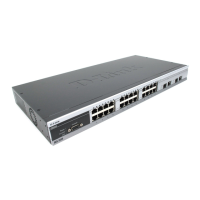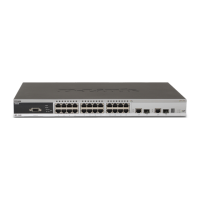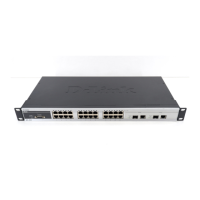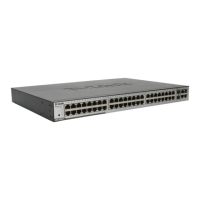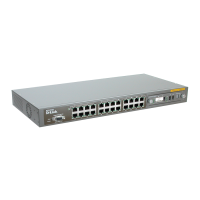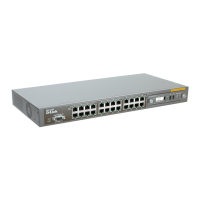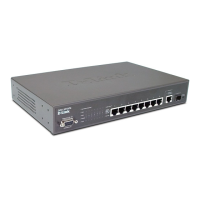DES-3550 Layer 2 Fast Ethernet Switch User’s Guide
60
The following parameters can be set:
Parameter Description
From/To
These two drop-down menus allow you to select a range of ports that the
filter settings will be applied to.
Mode
This drop-down menu allows you to select the action the Switch will take
when it receives a multicast packet that is to be forwarded to one of the ports
in the range specified above.
Forward All Groups − instructs the Switch to forward a multicast packet to
all multicast groups residing within the range of ports specified above.
Forward Unregistered Groups − instructs the Switch to forward a multicast
packet whose destination is an unregistered multicast group residing within
the range of ports specified above.
Filter Unregistered Groups − instructs the Switch to filter any multicast
packets whose destination is an unregistered multicast group residing within
the range of ports specified above.
Click Apply to implement the changes made.
VLANs
Understanding IEEE 802.1p Priority
Priority tagging is a function defined by the IEEE 802.1p standard designed to provide a
means of managing traffic on a network where many different types of data may be
transmitted simultaneously. It is intended to alleviate problems associated with the delivery of
time critical data over congested networks. The quality of applications that are dependent on
such time critical data, such as video conferencing, can be severely and adversely affected by
even very small delays in transmission.
Network devices that are in compliance with the IEEE 802.1p standard have the ability to
recognize the priority level of data packets. These devices can also assign a priority label or
tag to packets. Compliant devices can also strip priority tags from packets. This priority tag
determines the packet’s degree of expeditiousness and determines the queue to which it will
be assigned.
Priority tags are given values from 0 to 7 with 0 being assigned to the lowest priority data and
7 assigned to the highest. The highest priority tag 7 is generally only used for data associated
with video or audio applications, which are sensitive to even slight delays, or for data from
specified end users, whose data transmissions warrant special consideration.
The Switch allows you to further tailor how priority tagged data packets are handled on your
network. Using queues to manage priority tagged data allows you to specify its relative
priority to suit the needs of your network. There may be circumstances where it would be
advantageous to group two or more differently tagged packets into the same queue. Generally,
it is recommended that the highest priority queue, Queue 1, be reserved for data packets with
a priority value of 7. Packets that have not been given any priority value are placed in Queue 0
and thus given the lowest priority for delivery.

